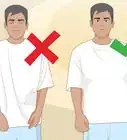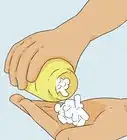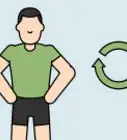This article was co-authored by Monica Morris. Monica Morris is an ACE (American Council on Exercise) Certified Personal Trainer based in the San Francisco Bay Area. With over 15 years of fitness training experience, Monica started her own physical training practice and gained her ACE Certification in 2017. Her workouts emphasize proper warm-ups, cool-downs, and stretching techniques.
There are 7 references cited in this article, which can be found at the bottom of the page.
This article has been viewed 3,098 times.
Having muscles that are “ripped” means having muscles with high definition and that are well developed.[1] Anyone can develop defined muscles, regardless of genetics, sex, or age. It is important to note that this is not an overnight process, growing muscles in a long-term process that can take months, sometimes years. If you are committed and dedicated, though, embarking on the journey to “get ripped muscles” can be extremely rewarding.
Steps
Diet
-
1Determine how many calories you should be consuming per day. There are many calorie calculators online (and they are all relatively the same) that can be used to determine your goal caloric intake. Take note of the amount of calories you need to consume to maintain weight.
-
2Create a meal plan to meet your calorie intake. Again, you’ll want to consume at least your maintenance calories or more to develop muscle. Protein should make up 10-35% of those calories, complex carbs should make up 50%, and heart-healthy fats should make up 20-35%[2] . Eating 2 grams of protein, 3-4 grams of carbs, and 1 gram of fats per kilogram of body weight is a good guideline to follow.[3]
- Maintain a lean diet if you're also trying to lose weight while you're working out.
Advertisement -
3Prep your meals for the week. Meal prep can prevent eating out, skipping meals, and eating unhealthy due to lack of time and energy.[4] Make a list and choose one day of the week to go shopping and cook and prepare all your meals for the week. It might be beneficial to do some research on the foods you’re interested in. Look up nutrition facts before going shopping to create a guide for yourself that will allow you to meet you percentage and calorie goals. Remember, the numbers don’t have to be exact; they are just parameters to help you get started.
-
4Follow through with your meal plan. Eat at least three meals a day containing proteins, carbs, and healthy fats according to your plan, and try to drink 2-3 liters of water a day.[5]
Exercise
-
1Know your muscle groups. Fitness experts consider the major muscle groups to be back, chest, abdominals, legs, shoulders, and arms (triceps and biceps). These groups can be further divided into smaller, more specific muscles, but as a beginner it is important to know the major 6 groups.[6]
-
2Figure out where and how you want to workout. You can workout at home or you can join a gym. Joining a gym is likely the easiest, most affordable option if you don’t already have equipment at home, and joining a gym will give you access to a bigger variety of equipment and exercise options.
-
3Plan your workout split. Your workout plan will depend on how often you plan on working out and how much time you dedicate to those workouts.
- For example, if you are working out twice a week, you may plan to work out your chest, shoulders, triceps, and abdominals on your first day, and your legs, back, and biceps on your second day.
-
4Learn and familiarize yourself with which exercises work which muscle groups. Machines at most commercial gyms will be labeled with the muscle group it targets, which is a good place to start. There are also an abundance of YouTube video tutorials that teach and demonstrate exercises using free weights. Pay attention to proper form when learning new workouts.
-
5Plan your workout. The first time you walk into the gym, you may choose to just explore your surroundings. See what the gym has to offer, find out about classes they offer, try out a few machines. Most gyms will offer a tour of the gym, take advantage of that so you can make the most of your resources. Once you have your bearings, make a plan. As a beginner, you’ll want to take it slow. Most exercises are done in “sets” of “reps”. A good place to start is by completing 3 sets of 10-12 reps for 3-4 different exercises.[7]
- A “rep” (short for repetition) is how many times you complete one movement or exercise. For example, if you jump up and down 10 times, you have completed 10 reps.
- A set is how many times you complete your reps with a rest period in between. For example, if you jump up and down 10 times, take a break, and do it again, you have completed 2 sets.
- Depending on your workout split (step 3), you may be working 1, 2, or 3 muscle groups. If you are working 3 muscle groups, complete 1 exercise for each group, and complete 3 sets of each. If you are working 1 muscle group, complete 3 different exercises for that 1 muscle group.
- After consistently completed 3 sets or 10-12 reps for 3 exercises for a week-2 week, you can add sets, reps, and/or exercises to your routine.
-
6Select your weight. Whether you are using free weights or a machine, you will need to choose a weight to use. If you don’t know where to start, start with the lightest weight and work your way up. The best weight to use is the weight that makes the last 2-3 reps of your set feel extremely difficult to complete.
-
7Complete your workout. In order to achieve desired results, consistency and effort are key. You will need to workout (and eat right) consistently to see results. You will also need to make sure you're pushing yourself to do as much as your muscles can possibly do. If the workout seems easy, you are doing it wrong. By the end of a workout, your muscles should feel exhausted. They shouldn’t hurt, but they should feel weakened and “worked.”
-
8Rest and recover. It is important to allow your muscles to heal after a workout. Most muscle develops during recovery.[8]
Expert Q&A
-
QuestionHow do I get ripped fast?
 Monica MorrisMonica Morris is an ACE (American Council on Exercise) Certified Personal Trainer based in the San Francisco Bay Area. With over 15 years of fitness training experience, Monica started her own physical training practice and gained her ACE Certification in 2017. Her workouts emphasize proper warm-ups, cool-downs, and stretching techniques.
Monica MorrisMonica Morris is an ACE (American Council on Exercise) Certified Personal Trainer based in the San Francisco Bay Area. With over 15 years of fitness training experience, Monica started her own physical training practice and gained her ACE Certification in 2017. Her workouts emphasize proper warm-ups, cool-downs, and stretching techniques.
ACE Certified Personal Trainer There's no easy and clear cut answer to this question. My advice is to have patience no matter what and to be consistent, because it will take some time. How long will depend on your starting point: if you're skinny, you're going to have to gain weight to build muscle; if you're overweight, you're going to have to shed fat while also building muscle. Keep focused and be patient. Put on the hard work and the results will show.
There's no easy and clear cut answer to this question. My advice is to have patience no matter what and to be consistent, because it will take some time. How long will depend on your starting point: if you're skinny, you're going to have to gain weight to build muscle; if you're overweight, you're going to have to shed fat while also building muscle. Keep focused and be patient. Put on the hard work and the results will show.
Warnings
- Not using proper from can lead to serious injury. Perform exercises at your own risk.⧼thumbs_response⧽
Expert Interview

Thanks for reading our article! If you'd like to learn more about exercising, check out our in-depth interview with Monica Morris.
References
- ↑ https://www.merriam-webster.com/dictionary/ripped
- ↑ https://www.eatright.org/fitness/training-and-recovery/building-muscle/strength-building-and-muscle-mass
- ↑ https://www.foodspring.de/en/nutrition-plan-muscle-building
- ↑ https://www.hsph.harvard.edu/nutritionsource/meal-prep/
- ↑ https://www.foodspring.de/en/nutrition-plan-muscle-building
- ↑ https://www.healthline.com/health/exercise-fitness/muscle-groups-to-workout-together#pairing-muscle-groups
- ↑ https://www.healthline.com/health/exercise-fitness/what-are-reps#takeaway
- ↑ https://www.verywellfit.com/the-benefits-of-rest-and-recovery-after-exercise-3120575
- ↑ https://www.eatright.org/fitness/training-and-recovery/building-muscle/strength-building-and-muscle-mass
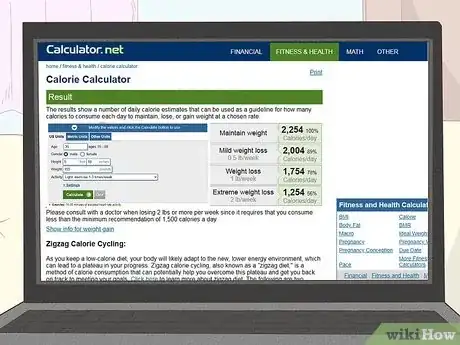
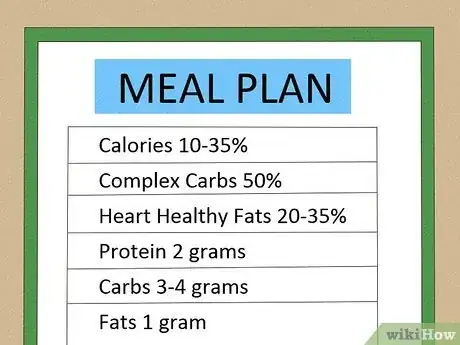
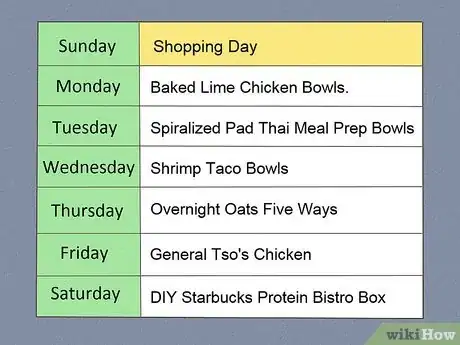
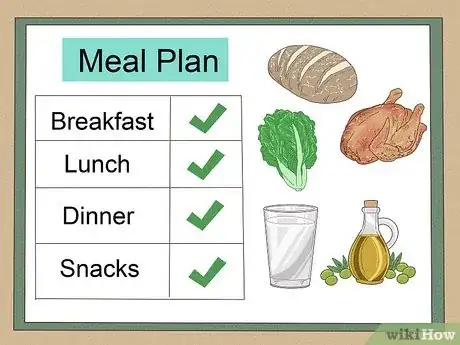
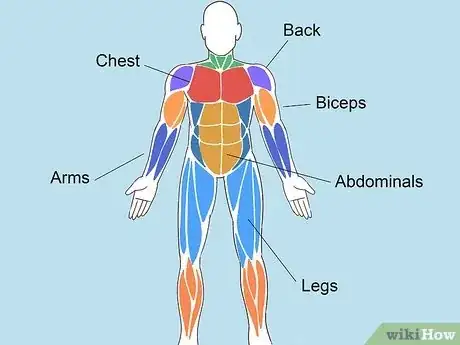
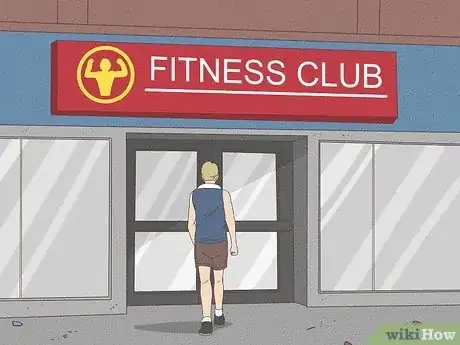
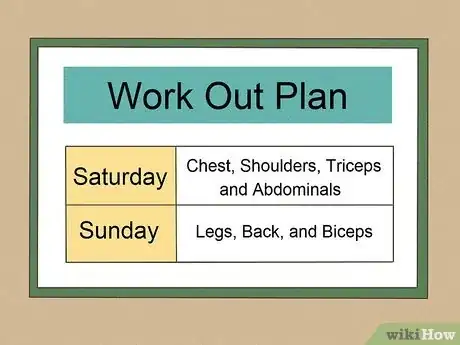
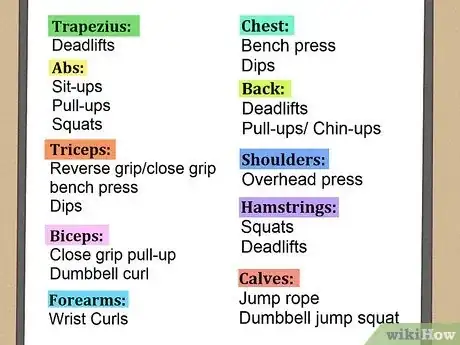
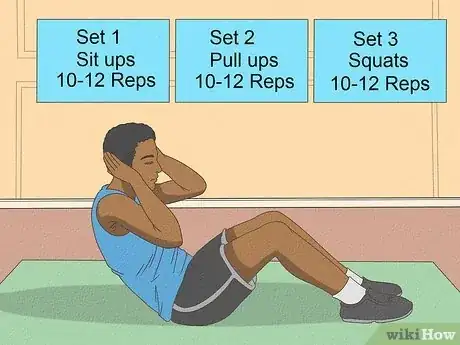
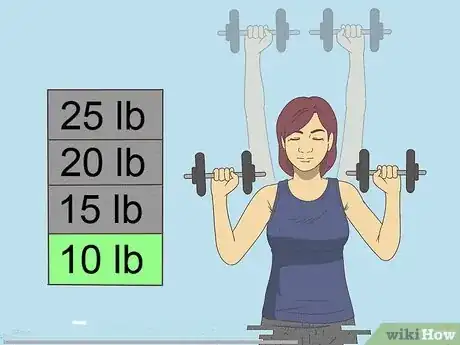
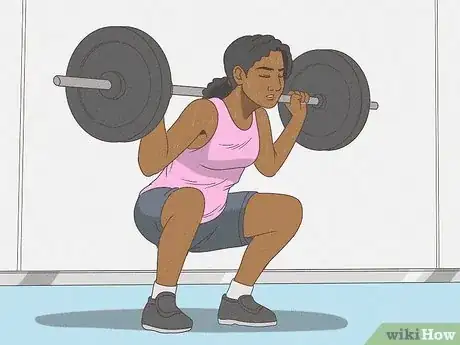

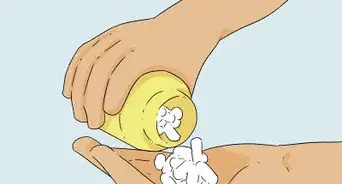

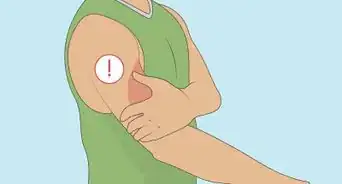

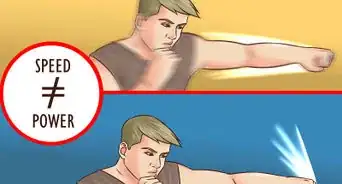
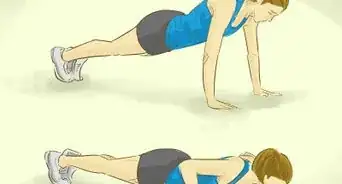
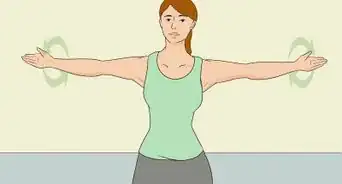
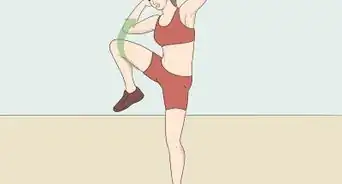
-Step-10-Version-5.webp)








